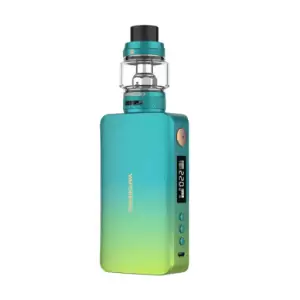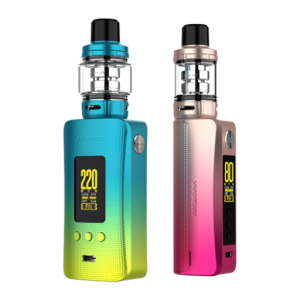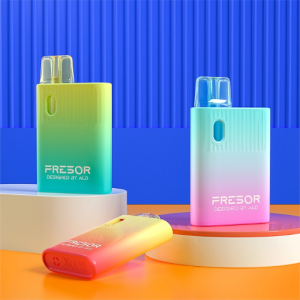In the quest to find effective smoking cessation methods, vape has emerged as a frontrunner, challenging traditional nicotine replacement therapies with its innovative approach. At its core, vaping involves inhaling vapor from an electronic device, often referred to as an e-cigarette. This method has gained traction among smokers for several reasons, not least of which is its ability to simulate the act of smoking without the harmful tar and chemicals found in cigarettes.
Vaping works by heating a liquid to generate an aerosol, or vapor, that the user inhales. This liquid typically contains nicotine, flavorings, and other chemicals, providing a similar sensation to smoking but with reduced health risks. Dr. Norman Edelman, Senior Scientific Advisor for the American Lung Association, acknowledges that while vaping is not without risks, it can be a valuable tool for smokers trying to quit. He notes, “For individuals struggling to leave smoking behind, vaping can be a stepping stone towards a smoke-free life, offering a way to manage nicotine cravings in a less harmful way.”
The transition from smoking to vaping can significantly reduce a smoker’s exposure to the myriad of toxic substances present in tobacco smoke. Health authorities, including Public Health England, have endorsed vaping as a less harmful alternative to smoking, suggesting it could be instrumental in helping smokers quit. This endorsement is rooted in a growing body of research that supports vaping’s role in smoking cessation efforts.
As we delve deeper into the world of vaping, it’s important to understand the different devices available and how they can cater to the needs of those looking to quit smoking. The journey from a traditional cigarette to a vape pen is not just a switch in habit but a step towards reclaiming one’s health. By embracing vaping, smokers are provided with a tool that offers control over nicotine intake, a way to satisfy oral fixations, and a path to gradually reduce their dependence on nicotine, all while distancing themselves from the carcinogens and toxins associated with cigarette smoke.

Understanding the Different Types of Vapes
The world of vaping is diverse, with a plethora of devices tailored to meet the needs of different users. From discreet pod systems to powerful box mods, the variety ensures that anyone looking to quit smoking can find a vape that suits their preferences and lifestyle. Each type of vape has its unique characteristics, influencing how effectively it can serve as a smoking cessation tool.
Pod systems are the epitome of convenience and simplicity in the vaping world. Compact and easy to use, these devices are perfect for beginners transitioning from smoking to vaping. They utilize pre-filled or refillable pods, making them hassle-free with minimal maintenance required. The nicotine delivery mimics that of a cigarette, offering a satisfying experience for those looking to curb their cravings without the complexities of more advanced devices. However, their simplicity also means fewer customization options, which may be a drawback for users looking to fine-tune their vaping experience.
Moving up in complexity, vape pens offer a balance between the ease of pod systems and the customization available in more advanced devices. Vape pens are characterized by their pen-like shape and are slightly larger, allowing for a better battery life and the ability to adjust settings such as airflow and power. This adjustability can be particularly beneficial for individuals trying to gradually reduce their nicotine intake, as it allows for a more tailored vaping experience.
At the high end of the spectrum lie box mods, the most advanced type of vapes. Known for their boxy shape and substantial size, these devices offer unparalleled customization. Users can adjust wattage, temperature, and airflow, and they work with a wide range of tanks and coils. Box mods are ideal for experienced vapers who demand control over every aspect of their vaping experience, including the ability to use lower nicotine strengths while still achieving a satisfying cloud production. The complexity and maintenance involved, however, can be overwhelming for beginners.
Each type of vape comes with its own set of pros and cons. Pod systems are celebrated for their ease of use and portability but may lack the longevity and customization sought by more experienced users. Vape pens strike a middle ground, offering more features than pod systems without the complexity of box mods. Meanwhile, box mods cater to those who prioritize customization and performance over simplicity and portability.
Choosing the right vape for quitting smoking involves considering various factors, including ease of use, nicotine delivery, and the desire for customization. By understanding the differences between the types of vapes, individuals can select a device that best matches their quitting journey, making the transition from smoking to vaping as smooth and effective as possible.
Key Features to Consider When Choosing a Vape for Quitting Smoking
Selecting the right vape can significantly influence your success in quitting smoking. It’s not just about picking any device but finding one that aligns with your smoking habits, preferences, and quit-smoking goals. Here are some crucial features to consider that can help tailor your vaping experience towards cessation.
Nicotine Strength and Control: The ability to adjust nicotine levels is paramount when transitioning from smoking to vaping. Initially, you may require a higher nicotine concentration to match the level you were accustomed to with cigarettes. Over time, the goal is to gradually reduce this strength to lower your nicotine dependency. Devices that offer adjustable nicotine levels or are compatible with a wide range of e-liquid strengths provide this flexibility, making it easier to step down your intake at a pace that suits you.
Battery Life and Portability: The last thing you want is for your vape to run out of power when you need it most. A device with a long-lasting battery can be a reliable ally in your fight against smoking cravings. Portability also matters, especially if you’re always on the go. Compact, lightweight vapes ensure you can carry your device with ease, reducing the risk of relapsing into smoking because you left your vape at home.
Ease of Use for Beginners: If you’re new to vaping, the complexity of some devices can be daunting. Starting with a user-friendly device that mimics the simplicity of smoking—a draw-activated pod system, for example—can ease the transition. Look for vapes with simple controls, easy refilling mechanisms, and straightforward maintenance requirements. As you become more comfortable with vaping, you might consider exploring more advanced features that offer greater control over your vaping experience.
Renowned public health expert Dr. Michael Siegel emphasizes the importance of choosing a device that feels right for you. The best vape for quitting smoking is one that you’re comfortable using,” he states. “It should satisfy your cravings without being overly complicated. Success in quitting smoking often comes down to finding the right tool that makes you forget about cigarettes.”
Remember, the goal is to find a vape that helps you manage your nicotine cravings in a less harmful way while keeping you engaged and committed to quitting smoking. Whether it’s the ease of use of pod systems, the balanced approach of vape pens, or the advanced features of box mods, the right device is out there. By considering nicotine strength and control, battery life and portability, and the device’s ease of use, you’re setting yourself up for a successful journey towards a smoke-free life.
The Role of Nicotine Salts in Smoking Cessation
The landscape of smoking cessation has been revolutionized with the introduction of nicotine salts, a game-changer for many attempting to quit smoking. Understanding the distinction between nicotine salts and traditional freebase nicotine is crucial for those exploring vaping as a cessation tool.
Nicotine salts are a form of nicotine that more closely mimics the natural structure found in tobacco leaves. When vaped, they provide a smoother throat hit at higher nicotine strengths compared to freebase nicotine. This characteristic is particularly appealing to recent smokers, as it allows for a satisfying nicotine intake without the harshness often experienced with higher concentrations of freebase nicotine.
The benefits of nicotine salts for smokers trying to quit are significant. Dr. Konstantinos Farsalinos, a well-known researcher in the field of smoking cessation and vaping, highlights the efficacy of nicotine salts in delivering nicotine in a way that is both satisfying and effective for smokers looking to transition away from cigarettes. “Nicotine salts,” he explains, “allow for higher concentrations of nicotine without compromising the vaping experience. This can be crucial in the early stages of quitting, where managing cravings is key.”
One of the primary advantages of nicotine salts is their ability to be absorbed into the bloodstream more quickly than freebase nicotine. This rapid absorption can provide immediate relief from nicotine cravings, making it easier for smokers to resist the urge to light up a cigarette. For many, this quicker satisfaction is what makes the difference in their quit-smoking journey, offering a closer approximation to the nicotine hit of smoking that many find lacking in other nicotine replacement therapies.
Moreover, the use of nicotine salts can lead to a more cost-effective vaping experience. Because they are more efficient at delivering nicotine, users may find themselves vaping less frequently, thus extending the life of their e-liquid and, by extension, their overall vaping costs.
When considering a vape for quitting smoking, it’s essential to explore devices that are compatible with nicotine salt e-liquids. Many pod systems and certain vape pens are designed to work well with this type of e-liquid, offering a balanced and satisfying experience for those transitioning from smoking.
Success Stories and Tips for Quitting Smoking with a Vape
The journey from smoking to vaping is unique for everyone, but sharing success stories and tips can provide valuable insights and inspiration for those looking to quit. Here, we highlight personal narratives and distilled wisdom from individuals who have successfully transitioned away from smoking using vaping as a tool.
Success Stories
- Emily’s Journey: After a decade of smoking, Emily turned to vaping as a last resort. Initially skeptical, she started with a simple pod system and nicotine salts. To her surprise, she found the transition smoother than expected. Six months into vaping, Emily had reduced her nicotine strength significantly and no longer felt the urge to smoke. “Vaping gave me control over my nicotine intake in a way that felt manageable and satisfying. It was the bridge I needed to finally quit smoking for good,” she reflects.
- Mark’s Transformation: Mark, a smoker of 20 years, found success with a more advanced device, allowing him to tweak settings to mimic the throat hit of a cigarette closely. “The ability to adjust my vape’s settings was crucial. It helped me manage cravings effectively,” Mark shares. His journey underscores the importance of finding a device that offers the right combination of features to address individual needs.
Tips for Quitting Smoking with a Vape
- Start with the Right Nicotine Strength: Choose a nicotine strength that matches your current smoking habit. Too high may be overwhelming; too low might not satisfy your cravings. Consider starting with a middle ground and adjust as needed.
- Choose a Device That Suits Your Lifestyle: Consider how a vape’s size, battery life, and maintenance requirements fit into your daily routine. A device that feels inconvenient is less likely to be used consistently.
- Be Patient with Yourself: Transitioning from smoking to vaping can take time. It’s normal to have moments of frustration or even relapse. What matters is persistence and the willingness to continue trying.
- Explore Flavors: One of the joys of vaping is the wide range of available flavors. Experimenting with different flavors can make vaping more enjoyable and distract from the taste of cigarettes.
- Engage with the Community: Online forums and local vaping communities can be great sources of support and advice. Sharing experiences and tips with others who are on the same journey can be incredibly motivating.
- Monitor Your Progress: Keep track of the days you’ve gone without a cigarette and any changes in your vaping habits, such as reducing nicotine strength. Celebrating these milestones can boost your motivation.
Quitting smoking is a significant challenge, but it’s one that many have successfully overcome with the help of vaping. By learning from the experiences of others and applying these tips, you can increase your chances of success. Remember, the goal isn’t just to quit smoking; it’s to embark on a healthier lifestyle free from tobacco’s grasp.

Conclusion: Embracing Vaping as a Path to a Smoke-Free Life
In conclusion, vape presents a viable and effective alternative for smokers seeking to quit. Through the detailed exploration of vaping as a smoking cessation tool, the various types of vapes, and the considerations for choosing the right device, it’s clear that vaping offers a customizable approach to overcoming nicotine addiction. The introduction of nicotine salts further enhances this method, providing a smoother transition for those accustomed to the high nicotine levels of cigarettes.
The personal success stories and practical tips shared highlight the real-world effectiveness of vaping in the journey towards quitting smoking. These narratives underscore the importance of patience, perseverance, and finding a vaping setup that resonates with individual needs and preferences.
For those contemplating this path, remember that quitting smoking is a deeply personal journey, often filled with challenges. However, the flexibility and adaptability of vaping as a cessation tool offer a promising route for many. With the right information, support, and vaping device, transitioning away from cigarettes becomes a more attainable goal.
As we close this guide, it’s essential to acknowledge that while vaping is a less harmful alternative to smoking, the ultimate aim for many is to free themselves from nicotine dependence entirely. Whether vaping serves as a temporary aid in this quest or a longer-term smoking alternative, its role in facilitating smoke-free lives cannot be understated.
The journey from smoking to vaping is one of transformation—not just in terms of health but in breaking free from the hold of tobacco. By making informed choices and leveraging the support and resources available, smokers can embark on a path that leads to a healthier, smoke-free future.
FAQs: Common Questions About Vaping for Smoking Cessation
Vaping, while recognized as a tool for smoking cessation, often raises questions and concerns. Addressing these can clarify misconceptions and provide smokers with the information needed to make informed decisions. Here are some frequently asked questions:
Q1: Is Vaping Safer Than Smoking Cigarettes?
Yes, vaping is generally considered safer than smoking cigarettes. Health experts, including those from Public Health England, estimate vaping to be 95% less harmful than smoking. This is because vaping eliminates the combustion process and thereby reduces exposure to tar and other carcinogens found in tobacco smoke.
Q2: Can I Completely Quit Nicotine by Vaping?
Many individuals have successfully used vaping as a step-down method to quit nicotine altogether. By gradually lowering the nicotine strength in their e-liquid, users can reduce their dependency on nicotine and eventually transition to nicotine-free vaping or quit vaping as well.
Q3: How Do I Choose the Right E-Liquid?
Choosing the right e-liquid involves considering nicotine strength, flavor preferences, and whether you prefer freebase nicotine or nicotine salts. Starting with a flavor you enjoy and a nicotine level that matches your smoking habit is a good strategy. Consultation at a reputable vape shop can also provide personalized recommendations.
Q4: Are There Any Side Effects to Vaping?
Like any nicotine replacement therapy, vaping can have side effects, especially for new users. These can include throat irritation, coughing, and dry mouth. Most of these side effects diminish over time as the body adjusts. Staying hydrated and starting with lower nicotine concentrations can help mitigate these effects.
Q5: How Can I Ensure My Vaping Experience is Safe?
To ensure a safe vaping experience, use devices and chargers from reputable brands, follow the manufacturer’s guidelines, and avoid modifying your device. Purchasing e-liquids from credible sources is also crucial to avoid exposure to harmful substances.
Q6: How Long Should I Use Vaping as a Quitting Tool?
The duration varies for each individual. Some may use vaping as a short-term tool to ease nicotine withdrawal, while others might vape longer as they gradually reduce their nicotine intake. Listen to your body and consult healthcare professionals if unsure.
References
- Composition and Regulation: Vaping liquids, or e-liquids, typically consist of propylene glycol, glycerin, flavorings, nicotine, and other additives. Despite containing over 15,000 flavors, these e-liquids have been found to include potentially harmful chemicals like formaldehyde at trace quantities. Regulatory standards vary by region, with the FDA setting compulsory manufacturing standards in the US and the EU publishing standards through the Tobacco Products Directive.
- Health Risks: Vaping poses significant health risks, including organ damage, a serious lung condition known as EVALI (e-cigarette, or vaping, product use associated lung injury), addiction, and potential for cancer. EVALI can be fatal and has been linked to vaping products containing vitamin E acetate, especially those acquired through informal sources.
- Impact on Respiratory Health: The vast variety of vape solutions complicates the understanding of their impact on respiratory health. Most contain nicotine, but alternatives include THC or CBD. The market offers over 8,000 flavors, and regulation, especially for THC vape solutions, is minimal.
- Popularity Among Teens: Vaping has seen a dramatic increase in popularity among teens, surpassing traditional cigarette smoking. New laws aim to curb this by raising the minimum purchase age for tobacco products to 21 and restricting the production and sale of appealing flavors to children.
- Comparison to Conventional Cigarettes: Studies have shown that while e-cigarettes deliver nicotine differently, their use still leads to nicotine addiction and can impair endothelial function and increase arterial stiffness, similar to traditional cigarettes.
- Regulatory Efforts: The FDA has not approved any e-cigarette as a cessation device or for reduced risk claims. Efforts to prevent youth vaping include education campaigns and resources for professionals and parents to mitigate the epidemic of youth vaping.






